Frequently Bought Together
100K Rotatory Variable Potentiometer with a 4mm D-Shaft gives you precise, reliable analog control over resistance in your electronic circuits. Potentiometers, commonly known as pots, act as variable resistors, and this 100 kΩ model is a versatile component ideal for controlling volume, setting threshold levels, adjusting light brightness, or providing analog input to microcontrollers like Arduino and Raspberry Pi. The linear taper ensures a predictable change in resistance proportional to the rotation angle. We specifically designed the 4mm D-shaft for easy and secure coupling with common control knobs, preventing rotation slippage and guaranteeing smooth, stable operation for all your prototyping and finished product needs.
Key Features:
- 100 kΩ Nominal Resistance: Provides a broad and useful range for voltage division and current limiting applications.
- Linear Taper (Type B): Ensures the resistance changes linearly as you rotate the shaft, which is preferred for general control and measurement circuits.
- 4mm D-Shaft: The D-shaped shaft provides a positive grip for matching knobs, preventing rotational play and offering excellent mechanical stability.
- 3-Pin Configuration: Easily integrates into breadboards and custom PCBs, functioning as a voltage divider or a rheostat.
- Reliable Construction: Offers a durable body and a long rotational life, maintaining consistent electrical contact through thousands of cycles.
Technical Specifications:
- Nominal Resistance: 100 kΩ
- Tolerance: ± 20% (Standard)
- Taper Type: Linear (Type B)
- Rated Power: ≈ 0.1 W to 0.5 W (Varies by size and heat dissipation)
- Maximum Operating Voltage: ≈ 200 V AC / 350 V DC
- Rotation Angle: ≈ 300° ± 5°
Mechanical Specifications:
- Shaft Type: D-Shaft
- Mounting Type: Panel Mount (Nut and washer included)
- Rotational Life: ≥ 10,000 Cycles
- Operating Temperature: ≈ -10°C to +70°C
Dimensions:
- Shaft Diameter: 4 mm
- Shaft Length: ≈ 15 mm
- Body Diameter: ≈ 16 mm
- Mounting Bushing Diameter: ≈ 7 mm
- Weight: ≈ 5 g
Pinout and Wiring:
- Pin 1 (Terminal 1): Connect to Ground (GND) or the lowest potential voltage source.
- Pin 3 (Terminal 3): Connect to VCC or the highest potential voltage source.
- Pin 2 (Wiper/Terminal 2): This is the variable output pin; the voltage here changes as you rotate the shaft. Connect this pin to an analog input (ADC) pin on your microcontroller.
- Function: By connecting VCC and GND across the outer pins, you create a voltage divider, allowing the center pin to output a voltage from 0V to VCC.
Datasheet Reference:
- Download Rotary Potentiometer Specification
Commonly Used in:
- Audio Equipment: Setting volume levels, tone control, and balance.
- Hobby Electronics: Prototyping input devices for Arduino and other development boards.
- Lighting Control: Adjusting the dimming level in LED and low-power circuits.
Applications:
- Voltage Dividers: Creating a variable reference voltage for op-amps and comparators.
- Analog Input Sensors: Serving as a simple user interface for menus, calibration, and speed control.
- Rheostats (Variable Resistor): Wiring only the wiper and one outer pin to control current in a circuit.
Equivalent Models:
- 10 kΩ or 50 kΩ Potentiometers: Common alternatives for higher current/lower resistance applications.
- Logarithmic Taper Potentiometers (Type A): Used specifically for volume control where human hearing perception requires a non-linear resistance change.
- Trimmer Potentiometers: Smaller, multi-turn versions designed for PCB-based, set-and-forget calibration.
Package Includes:
- 1 x 100K Rotatory Variable Potentiometer with 4mm D Shaft
- 1 x Nut and Washer for Panel Mounting
Additional information
| Weight | 8 g |
|---|


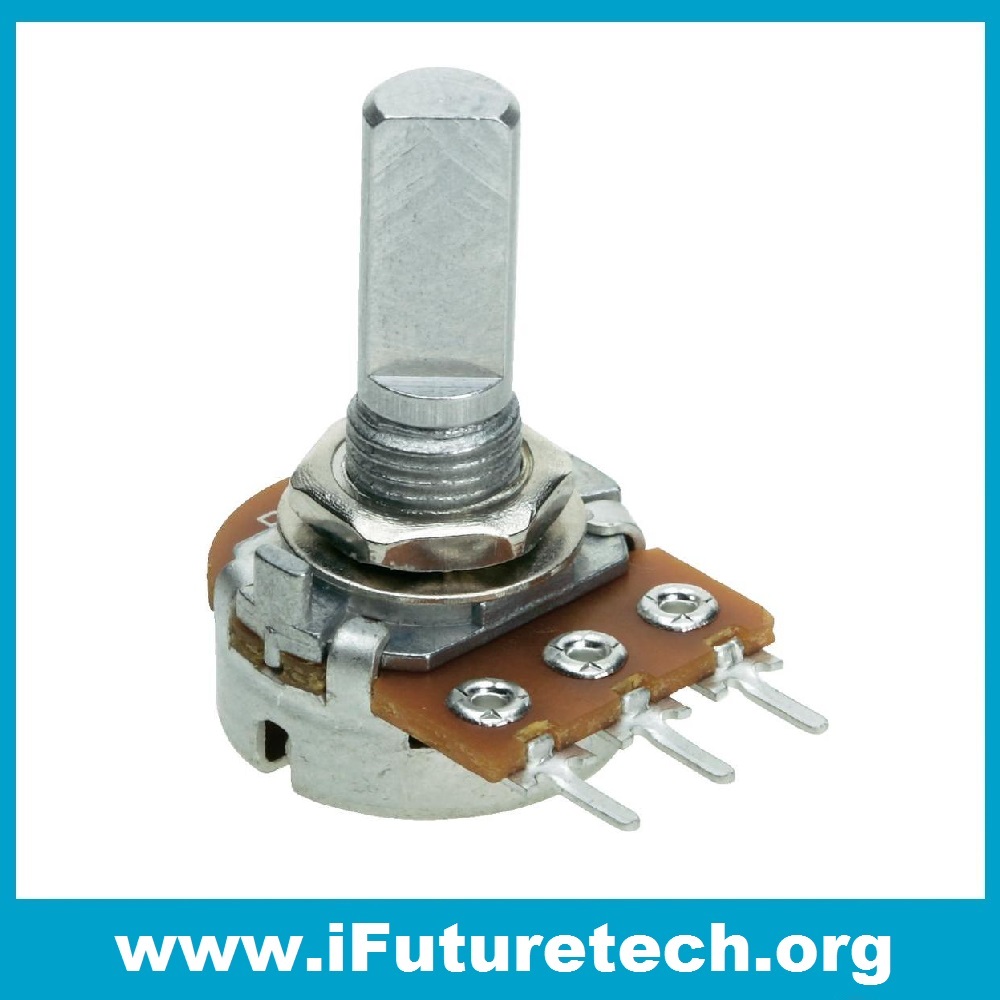

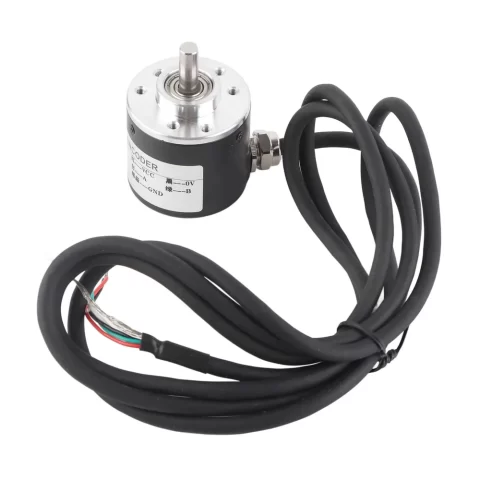
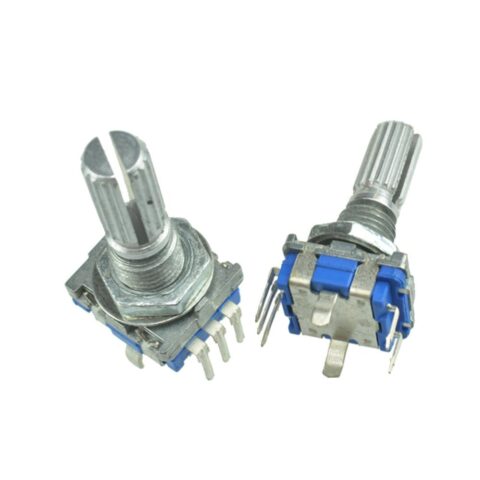

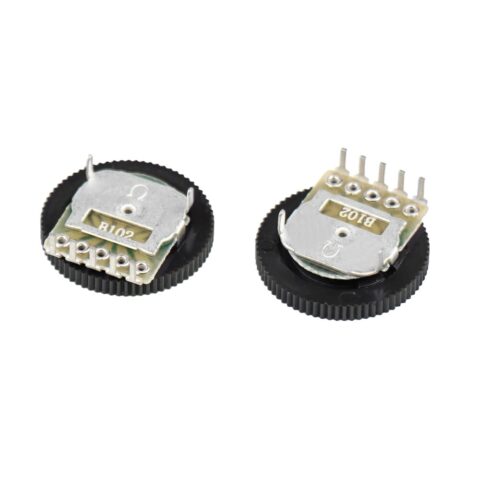
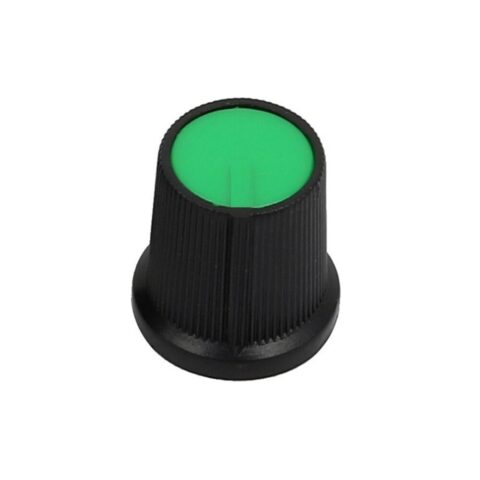

Reviews
There are no reviews yet.